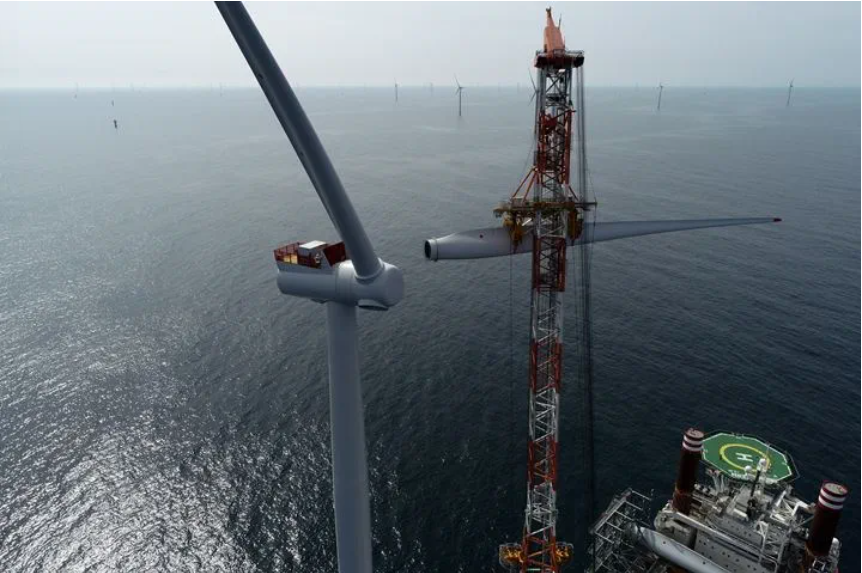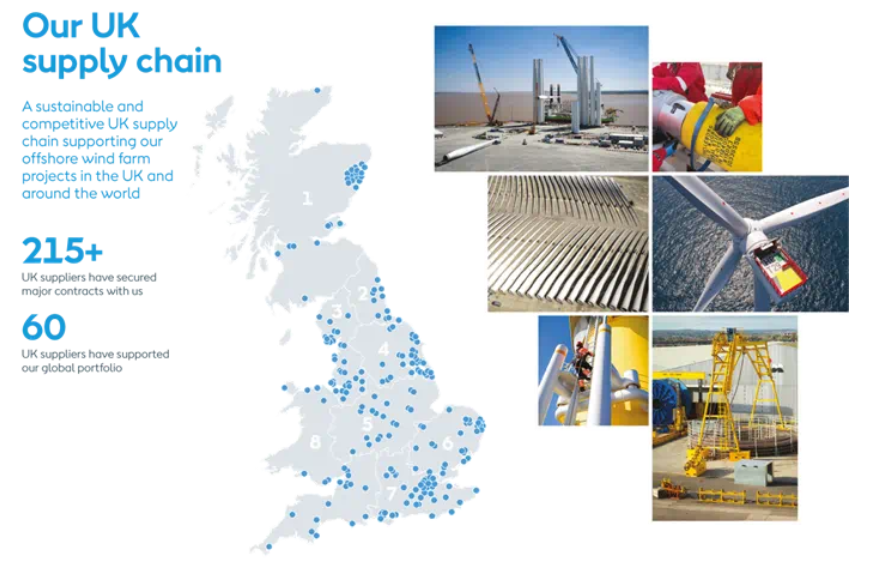When it comes to the UK supply chain, we all need to embrace the marathon spirit
Marc Adams, Ørsted's Senior UK Supply Chain Development Manager
| Ørsted
6 min read
The offshore wind supply chain and marathon running.
Besides being two passions of mine, what parallels can be drawn between the two? In my opinion, a lot.
After over a decade of experience, I’ve come to appreciate that the build-up of the UK supply chain is a marathon, not a sprint. It requires a structured regime, hard work, persistence, innovation, timing, ambition and sometimes a bit of luck – all the traits needed to complete a marathon.
Over the years, the UK’s nascent offshore wind supply chain has faced setbacks, frustrations, and a few difficult weather windows. But just like when you’re training for a marathon, with each day, we’ve taken a step forward in the right direction. We’ve done this by expanding the supply chain for products and services in the UK, serving the home market, and the rapidly expanding global market.
The build-up of the UK supply chain is a marathon, not a sprint.
 Marc Adams, Senior UK Supply Chain Development Manager, proudly wearing his medal after completing the 2021 London Marathon.
Marc Adams, Senior UK Supply Chain Development Manager, proudly wearing his medal after completing the 2021 London Marathon.
Early days
We’ve come a long way since the days when I first started working in offshore wind in 2009.
Back then, the Hornsea projects were owned by the Smart Wind joint venture, the Crown Estate was eagerly announcing the outcomes of its Round Three seabed Leasing Round, we were working toward Renewable Obligation Certificates not Contracts for Differences, and industry stalwarts such as Benj Sykes were finding their feet in a rapidly growing industry.
The Round Three lease bed announcements in 2010, followed by the early-stage Contracts for Differences in 2014, brought a huge amount of excitement, expectation, and ambition.
One thing I know today that many of us did not know then, is that we needed to be more Eliud Kipchoge, the Kenyan long-distance runner who is considered by many to be the greatest marathon runner of all time, and less Usain Bolt, the world-famous Jamaican sprinter.
But what we ended up with at that time was Bolt trying to run a marathon – particularly when it came to working and engaging with the UK supply chain.
The growing industry was talking about substantial numbers of gigawatts, investments, and jobs – the excitement was palpable.
It was understandable that supply chain companies in the UK coming out of the 2008 recession were looking to diversify their business and spent a huge amount of time assessing the opportunity.
 Hornsea 1, the world’s first offshore wind farm to exceed 1 GW in capacity, becoming operational in 2019 was a major milestone in Ørsted’s ongoing race to create a world that runs entirely on green energy.
Hornsea 1, the world’s first offshore wind farm to exceed 1 GW in capacity, becoming operational in 2019 was a major milestone in Ørsted’s ongoing race to create a world that runs entirely on green energy.
Reality check
But what the industry was less good at was managing expectations.
No one knew how long the planning and consents process would take. For reference, the Crown Estate Round 3 projects from 2008 are likely to still be in construction well into the second half of this decade.
The supply chain was seeking to identify who their key customer might be and considering what the industry looks for in new suppliers.
Coupled with nine new governments and six prime ministers (2010-2023), all with slightly differing views on offshore wind industrial policy, we ended up with significant periods of frustration and uncertainty. The initial euphoria was hit with a reality check.
The superfast Bolt-esq start that came with huge amounts of enthusiasm often tapered due to a lack of supply chain investment or suppliers who ultimately were not able to last the distance to be sustainable and competitive.
Despite challenges over the years, the industry has always maintained a sense of optimism, opportunity, and resilience.
The transition from small supply chain events in seaside towns around the UK to over 5,000 people attending the Renewable UK Global Offshore Wind conference this month shows the scale of the industry’s growth and the progress it’s made over the last decade.
More hurdles to overcome
We experienced another injection of Bolt-like enthusiasm in 2022 with the ScotWind Leasing round which awarded an overall capacity of over 27 GW.
But whilst the industry and supply chain in the UK is in a much stronger and more mature position than they were in 2010, there are still important hurdles that the industry and UK Government need to overcome to realise the wider economic benefits of the sector.
Across the supply chain and supporting regulatory environment there are many lessons learnt we can bring into our future thinking. These lessons include industrial policy, port development, as well as skills and supply chain development, to name a few.
There is without doubt more that can be done to strengthen the UK supply chain and to create more UK-based suppliers who offer a competitive and sustainable business case, but we should also not forget the successes that have happened to date.
From an Ørsted perspective, in the past five years alone we have placed major contracts with over 215 UK suppliers who have supported our UK portfolio. Many of these suppliers have secured multiple contracts with us working on more than one of our 13 operational wind farms in UK waters.
Across the supply chain and supporting regulatory environment there are many lessons learnt we can bring into our future thinking.

DOWNLOAD OUR UK SUPPLY CHAIN MAP
In addition, at least 60 of these UK suppliers have also worked on our global portfolio in countries such as Denmark, Germany, Netherlands, Taiwan, and the US.
With Hornsea 3 expected to reach a Final Investment Decision this year, Hornsea 4 on the horizon, and other development projects in the Isle of Man and Scotland, the UK continues to be a core market for Ørsted in what is now a truly global industry.
Lessons going forward
What lessons from the last decade of the industry’s supply chain development can we take into the next one?
- Amazing companies are doing amazing things in the industry already. We need to tap into that expertise.
- UK projects want to see competitive and sustainable UK suppliers succeed.
- New suppliers should get to know their potential customer and spend time getting in front of them.
- Innovate. Through innovation we’ve seen cost reduction, higher yields and safer working environments. How can your products and services elevate the industry?
- Utilise the support out there to help you succeed.
- If you don’t know who the Offshore Wind Growth Partnership are, then do take time to understand how they may be able to help you.
But the biggest lesson of all that I’ve learned: Embrace the marathon spirit.
For those of you that have ever ran a marathon or undertaken something that has challenged and pushed you to be something better either as a person or as a company, you will know throughout that journey there are highs and lows.
Push through the lows, celebrate the highs, and then maybe you might be the next Eliud Kipchoge of the offshore wind industry. Running four out the six fastest marathons in history – including the fastest in 2:01:09 – is definitely impressive!
